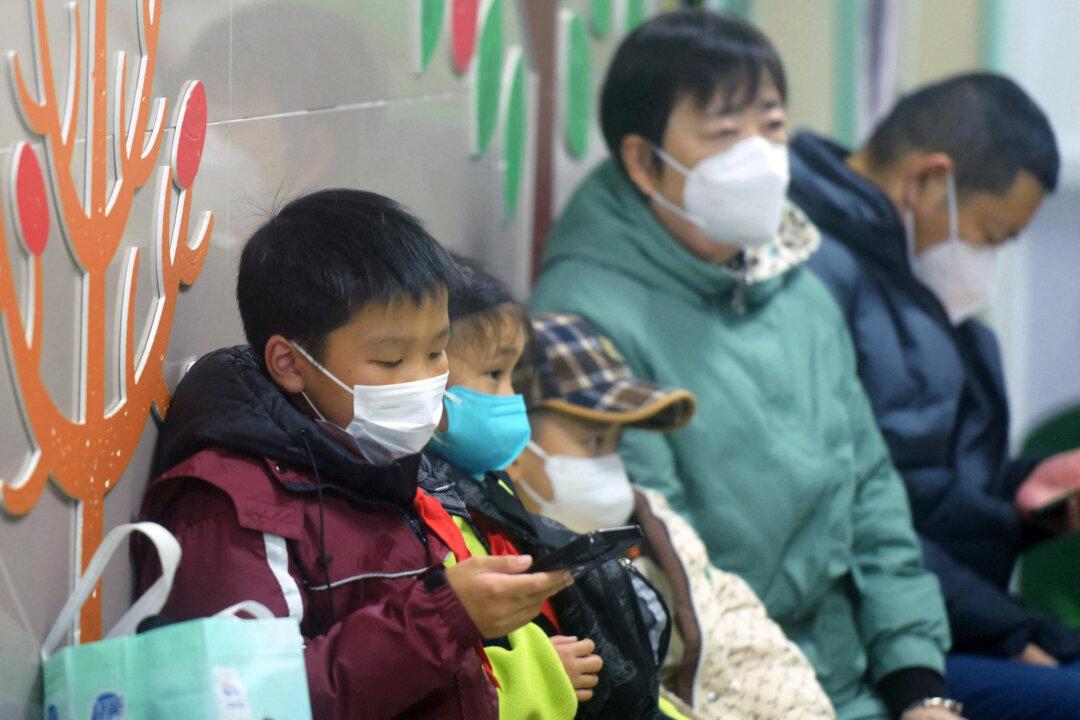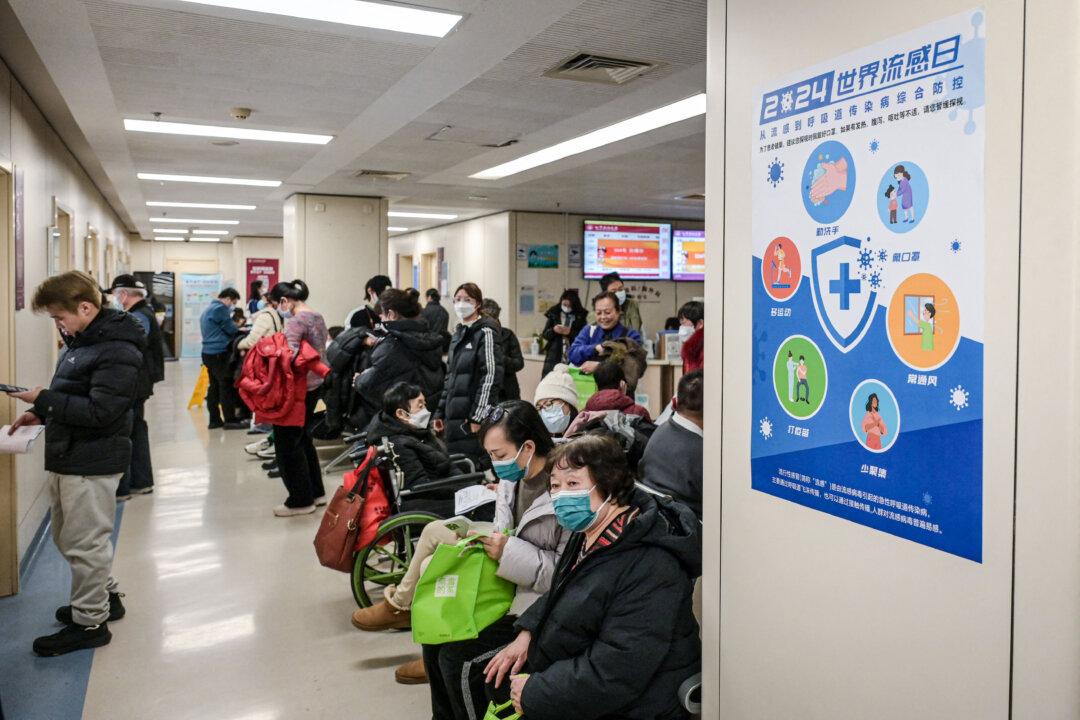The Chinese communist regime’s health authorities have released January infectious disease data amid an ongoing wave of respiratory infections. Medical professionals told The Epoch Times that the regime is underreporting the outbreaks.
In the same period, 33,218 people were infected with COVID-19, and four died from it, the report states.
The data show no infections or deaths from H7N9 avian influenza or human infection with highly pathogenic avian influenza (H5N1). The numbers apply only to mainland China.
Compared with China’s official data for December 2024, which reported 1,509,750 influenza infected and seven deaths, there has been a significant surge in infections. December 2024 data didn’t include COVID-19 infections. China also reported zero avian influenza infections.
Hong Kong health authorities reported 122 influenza deaths in the first four weeks of January. Hong Kong has more than 7 million residents. It’s adjacent to China’s mega city Shenzhen and is part of the Hong Kong, Guangzhou, and Shenzhen megaregion. There are more than 800,000 commuters traveling between Hong Kong and Shenzhen daily.
Dr. Jonathan Liu, a professor at Canada Public College and director of Liu’s Wisdom Healing Centre, told The Epoch Times on Feb. 16 that Hong Kong’s data is more credible “because Hong Kong still has a certain degree of freedom in this regard.”
He said that people should pay attention to the Hong Kong data as “so many people died from influenza in Hong Kong within one month, which means that the epidemic is very serious.”
Liu said that China’s January data released by the communist regime “does not seem real.”
Sean Lin, assistant professor in the biomedical science department at Feitian College and a former U.S. Army microbiologist, had a similar assessment.
“The data released by Hong Kong is relatively reliable because it not only includes the number of deaths but also the number of people in the ICU who’re critically ill. This gives the public a clear idea about the situation. There are only more than 2 million people infected in mainland China, and only 9 people died? This data is simply not credible,” he told The Epoch Times on Feb. 17. “How this data was calculated and what is the scope of the data collection, there was no explanation at all.”
The Chinese regime suspended COVID-19 testing in hospitals in December 2022, when it suddenly abandoned its COVID-19 pandemic restrictions. Self-testing kits are not available in pharmacies.
“It is not clear how many hospitals are still conducting COVID-19 tests. So I believe that this data is seriously underreported,” Lin said.
A Chinese epidemic prevention worker, who wished to remain anonymous because of safety concerns, told The Epoch Times on Feb. 16: “Hong Kong’s data is credible, ours is not. [The Chinese regime] conceal everything, not just this (epidemic).”
A whistleblower revealed in a social media post that the Chinese regime’s official way of counting deaths from influenza A is the same as how they counted COVID-19 deaths. If the deceased had other underlying diseases or other medical complications, their deaths are not counted as deaths from influenza A.
The Center for Disease Control and Prevention (CDC) in Hefei, Anhui Province, issued a notice on Jan. 3 reminding residents that “currently, the influenza outbreak in Anhui Province is at a high intensity and is in the epidemic period!”
“The influenza epidemic level is level 4 (level 1 is the lowest risk and level 5 is the highest risk), which is one level higher than last week,” the notice reads.

Yang Lan, a Chinese epidemiological investigator using a pseudonym due to safety concerns, told The Epoch Times that the notice shows that the spread of the influenza epidemic in Anhui is serious, as it’s very close to the total lockdown level during the COVID-19 pandemic, which is level 5, “but now it is impossible to lock down again,” she said.
Liu said that the local CDC releasing the notice in this area shows that “the front-line health personnel, including technical officials or doctors directly involved in these medical cases, knew the severity of the epidemic, so they released this notice to alert the public.”
The real situation is very different from the official numbers released by Beijing, he said.

Lin said: “I believe that the Chinese authorities are also concealing information about human infection with highly pathogenic avian influenza. I think this issue needs to be made public urgently.”
According to Yang, the mutated strains of influenza A are causing serious complications and deaths in mainland China.
She said that the Asian Winter Games had just ended in Harbin, Heilongjiang Province, China, and many people went there.
“There will be a big outbreak there next, so try not to go to the region. Currently, the city with the most [influenza] deaths is Shenyang, where 206 people died in one day,” she said.
Yang said the influenza epidemic in Xi’an, China, is also very serious.
“During the Chinese New Year holiday, many people went to the tourist sites in the city such as the Terracotta Warriors. The number of infections has increased significantly recently,” she said.
She warned that people should avoid going to crowded places or should wear N95 masks if they have to.
Liu said the Chinese regime’s alleged concealing of epidemic information is related to the economy.
“Their goal is of course to stabilize economic development, because the Chinese economy is currently in a serious situation, especially [because] it wants to attract more people to invest in China. If a large-scale infectious disease outbreak occurs, foreign investors will definitely be unwilling or dare not to invest,” he said. “In fact, from the SARS epidemic in 2003 to the present, the Chinese regime’s handling of health crises under its political system has not changed.”






